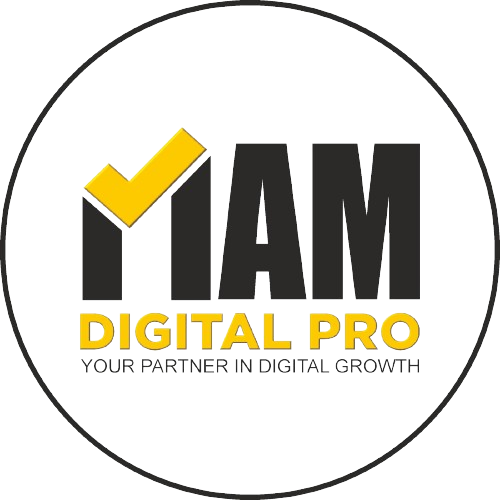In today’s technologically advanced world, where everything is digital, it is essential to have a solid online presence for any business to succeed. In digital marketing, having a killer portfolio is one of the most important things for your Digital Marketing Agency to stand out and attract clients. A portfolio showcases your skills, creativity, and experience and can convince potential clients that you are the right agency for them. Here are some tips for creating a killer marketing agency portfolio.
Know your Audience
The first step in creating a killer portfolio is to understand your audience. Who are your potential clients? What are their pain points? What kind of services do they require? Understanding your target audience will help you create a portfolio that speaks to them and addresses their needs. Make sure you tailor your portfolio to showcase the services you provide and the results you have achieved for similar clients.
Highlight Your Best Work as a Digital Marketing Agency
Your portfolio should showcase your best work and highlight the results you have achieved for your clients. Choose projects that demonstrate your expertise and creativity in digital marketing. Ensure you provide a detailed description of each project, including the services you provided, the strategies you used, and the results you achieved.
Showcase Your Creativity
In digital marketing, creativity is vital. Your portfolio should showcase your creative approach to digital marketing and the unique solutions you have provided for your clients. Use visual elements such as images, videos, and infographics to showcase your creativity and make your portfolio stand out.
Use Data to Back Up Your Results.
When it comes to digital marketing, data is king. Your portfolio should include data that demonstrates the results you have achieved for your clients. Use metrics such as website traffic, conversion rates, and ROI to showcase the impact of your digital marketing strategies. Use charts and graphs to make the data easy to understand and visually appealing.
Provide Testimonials
Testimonials from satisfied clients are a powerful way to showcase the quality of your work and the results you have achieved. Include testimonials from clients who have seen significant improvements in their online presence and business results after working with your agency. Ensure you include the client’s name, company, and photo to add credibility to the testimonial.
Keep it Simple and Easy to Navigate.
Your portfolio should be easy to navigate and visually appealing. Keep the design simple and uncluttered, with clear headings and subheadings. Use a consistent layout throughout the portfolio to make it easy to read and navigate. Ensure the portfolio is optimized for mobile devices, as many potential clients may view it on their smartphones or tablets.
Include Your Team
Digital marketing is a team effort, and your portfolio should showcase the expertise and experience of your team. Include bios of your team members, highlighting their skills and expertise. Ensure you include photos of your team members to add a personal touch to the portfolio.
Keep It Up to Date.
Keeping your portfolio up-to-date with your latest achievements and work is essential. Ensure to add new projects and results as soon as they are completed. By doing this, you will demonstrate your agency’s commitment to delivering quality work and staying current with digital marketing trends.
Make It Easy To Contact You.
Finally, make it easy for potential clients to contact you. Include a contact form or a clear call to action on each portfolio page. Ensure you provide multiple ways for potential clients to get in touch, such as by phone, email, and social media.
Conclusion
In conclusion, creating a killer portfolio for your digital marketing agency requires a combination of creativity, expertise, and attention to detail. By following these tips, you can create a portfolio that showcases your agency’s skills, experience, and unique approach to digital marketing. Remember to tailor your portfolio to your target audience.
Once you have created your portfolio, it’s time to promote it. Please share it on social media (Like Facebook, Twitter, Linkedin, and Instagram) and include a link in your email signature. Let potential clients know about your portfolio and how it can help them.
FAQs
1. What should be included in a digital marketing agency portfolio?
A digital marketing agency portfolio should showcase your best work and demonstrate your skills and expertise. Including case studies of successful campaigns/projects you’ve worked on is critical, showing the strategy, execution, results, and impact. Include metrics and data to back up your claims. Show a range of work across different channels – SEO, PPC, social media, email marketing, content marketing, etc. Share examples of assets you’ve produced – ads, landing pages, emails, guides, etc. Feature testimonials from happy clients. Overall, your portfolio should highlight your capabilities and convince potential clients you can deliver results.
2. How do I create an impressive digital marketing portfolio?
- Have a clear structure and logically showcase your best projects
- Write compelling case studies explaining your process and the results achieved
- Choose tasks that represent your skills and experience
- Use visuals like charts to illustrate data, graphs, and tables that indicate growth
- Include client testimonials and feedback
- Showcase your unique capabilities and expertise
- Ensure the portfolio loads fast, UI/UX is smooth, and branding is consistent.
- Update frequently and remove old/irrelevant projects
- Leverage quality graphics and visual content
- Follow trends and include examples of the latest work
3. What platforms can I use to display my digital marketing portfolio?
Some popular platforms for creating and displaying digital marketing portfolios include:
- Personal Website – Gives you complete control to customize and showcase work.
- Behance – Leading portfolio platform for creatives. Build your own customized profile.
- Dribbble – Popular for graphic designers. Show your web/graphic design skills.
- LinkedIn – Leverage your profile to highlight projects and expertise.
- SlideShare – Create presentations to display capabilities and case studies.
- Wix / Squarespace – Website builders with portfolio templates. Easy to create portfolio sites.
- Carbonmade – Affordable portfolios with sleek designs for creatives.
4. What makes a compelling case study for a digital marketing portfolio?
A compelling case study should follow this framework:
- Overview – Brief background on client, goals, and industry context
- Strategy – Approach, tools, and tactics you implemented for the campaign
- Execution – How you executed the strategy across different channels/platforms
- Results – Quantifiable metrics, data, graphs showing impact and ROI
- Testimonial – Feedback from the client on your work and results
- Takeaways – Key lessons and accomplishments from the project
Choose results-driven case studies that highlight your strategy and measurable impact. Focus on presenting a compelling story.
5. How should I maintain and update my digital marketing portfolio?
- Review your portfolio every 3-6 months for needed updates
- Add new case studies and projects that showcase the latest skills
- Retire old projects or refresh projects more than 3 years old
- Keep portfolio content, visuals, and web design current and trendy
- Ensure links, images, graphics, and content work as intended
- Monitor site performance – site speed, mobile responsiveness, etc.
- Check for typos or errors needing correction
- Update contact information if required
- Solicit client testimonials for new projects
6. What mistakes should I avoid when creating my portfolio?
Avoid these common mistakes:
- Spelling or grammar errors
- Slow loading times, broken links, poor navigation
- Outdated designs and projects
- Confusing layout and structure
- Portfolio that is too text-heavy rather than visual
- Lack of metrics or measurable results for projects
- Irrelevant or fake testimonials
- Inconsistent branding and messaging
- Failure to showcase range and depth of work
- Not customizing portfolio for each application
7. How important are testimonials in a digital marketing portfolio?
Testimonials add tremendous credibility and social proof to your portfolio. Direct feedback from satisfied clients on your work and results is powerful. Testimonials reinforce your claims on the case studies. Make sure they are authentic and attribute quotes to specific clients. Accompany text testimonials with client logos for added validity. Video testimonials can also powerfully back your work.
8. How can I customize my portfolio for different job applications?
- Understand the company’s needs and tailor case studies accordingly
- Highlight projects in similar industries/domains as the job posting
- Focus on showcasing the skills and experience required for the role
- Update portfolio intro/bio to match job posting
- Tweak testimonials to include clients in the same target industry
- Adapt tone and messaging for each application
- Include keywords and requirements from the job description
- Append a cover letter summarizing your fit
9. What makes a digital marketing portfolio stand out?
Factors that make a portfolio truly stand out:
- A unique brand voice and personality
- Compelling and professionally designed visuals
- Robust metrics proving tangible ROI
- Varied examples showing breadth of experience
- Creative presentation and interactive elements
- Video testimonials and case studies
- Easy to navigate and mobile-friendly
- Consistent and professional branding
- Clear calls-to-action for contacting you
- Attention to detail and flawless execution
10. What other tips do you have for creating a solid digital marketing portfolio?
Some additional tips:
- Showcase both the breadth and depth of your digital skills
- Demonstrate up-to-date expertise in the latest trends and channels
- Keep language clear, concise and avoid industry jargon
- Balance text and visuals – don’t make it too text-heavy
- Ensure consistently strong branding and visual identity
- Be selective – handpick your best 7-10 projects
- Highlight the results you delivered for each client
- Convey your unique personality and work style
- Collect client testimonials for projects
- Proofread extensively and fix any errors
- Frequently update and refine the portfolio

